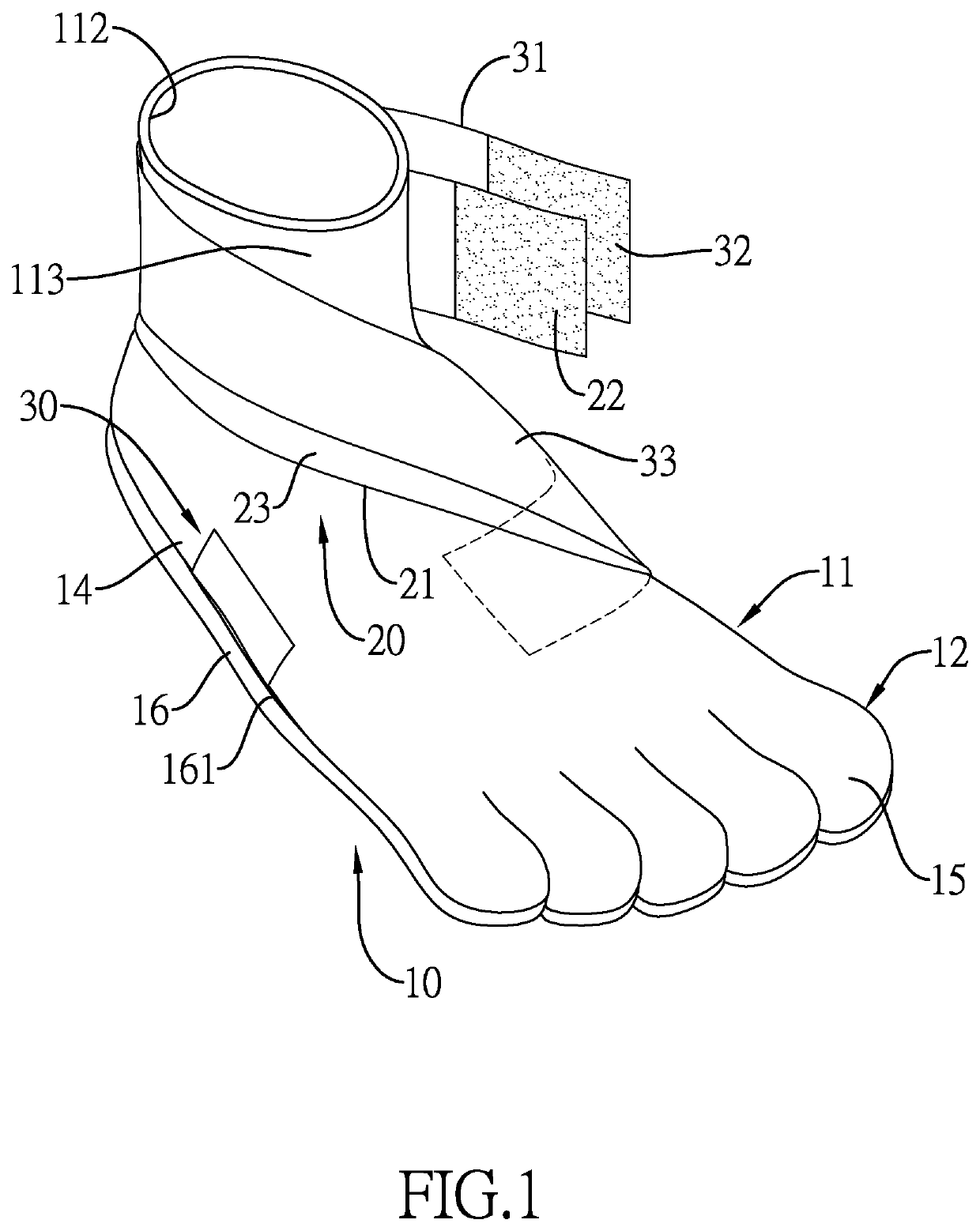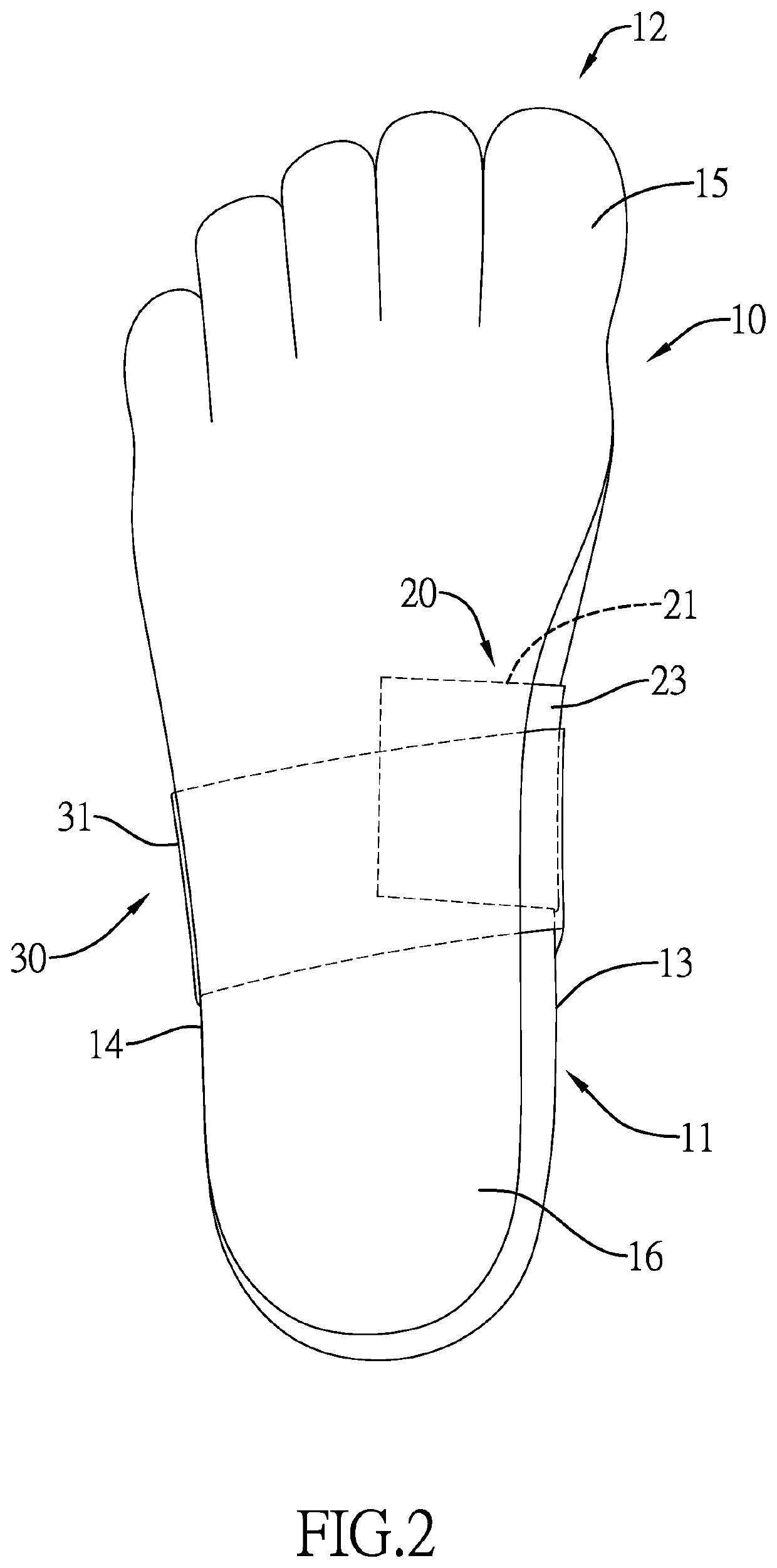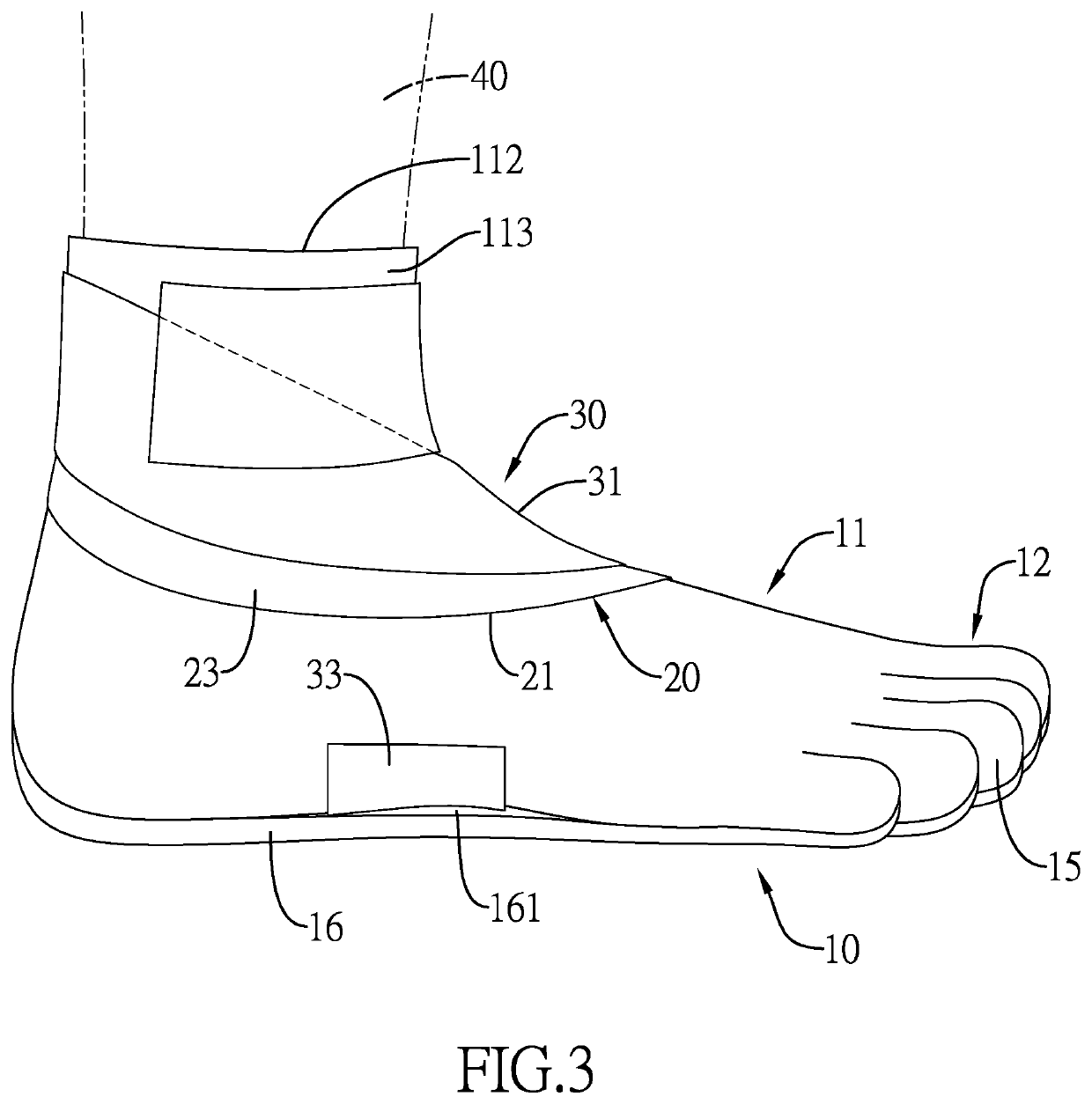Minimalist barefoot shoes for correcting flatfeet
a technology of flat feet and shoes, applied in the direction of bootlegs, fastenings, uppers, etc., can solve the problems of pronation of feet, inability to support the weight of the person, and easy falling down of humans
- Summary
- Abstract
- Description
- Claims
- Application Information
AI Technical Summary
Benefits of technology
Problems solved by technology
Method used
Image
Examples
Embodiment Construction
[0014]With reference to FIGS. 1 to 3, a pair of minimalist barefoot shoes in accordance with the present invention comprises two shoe units. Each shoe unit comprises a shoe member 10, a medial arch pulling member 20, and a pressing member 30.
[0015]With reference to FIGS. 1, 2, and 4, the shoe member 10 comprises a shoe body 11, a toe member 12, and a sole 16. The shoe body 11 has a medial arch segment 13 and an instep lateral segment 14. The medial arch segment 13 is formed on a first side of the shoe body 11. The instep lateral segment 14 is formed on a second side of the shoe body 11 opposite the first side. A receiving space 111 is formed in the shoe body 11, and an opening 112 is defined in a top of the shoe body 11 and communicates with the receiving space 111. An attachment layer 113 is mounted on the shoe body 11 at a position adjacent to the opening 112. Preferably, the attachment layer 113 is a loop connection strap. The toe member 12 is mounted on a front end of the shoe b...
PUM
 Login to View More
Login to View More Abstract
Description
Claims
Application Information
 Login to View More
Login to View More - R&D
- Intellectual Property
- Life Sciences
- Materials
- Tech Scout
- Unparalleled Data Quality
- Higher Quality Content
- 60% Fewer Hallucinations
Browse by: Latest US Patents, China's latest patents, Technical Efficacy Thesaurus, Application Domain, Technology Topic, Popular Technical Reports.
© 2025 PatSnap. All rights reserved.Legal|Privacy policy|Modern Slavery Act Transparency Statement|Sitemap|About US| Contact US: help@patsnap.com



